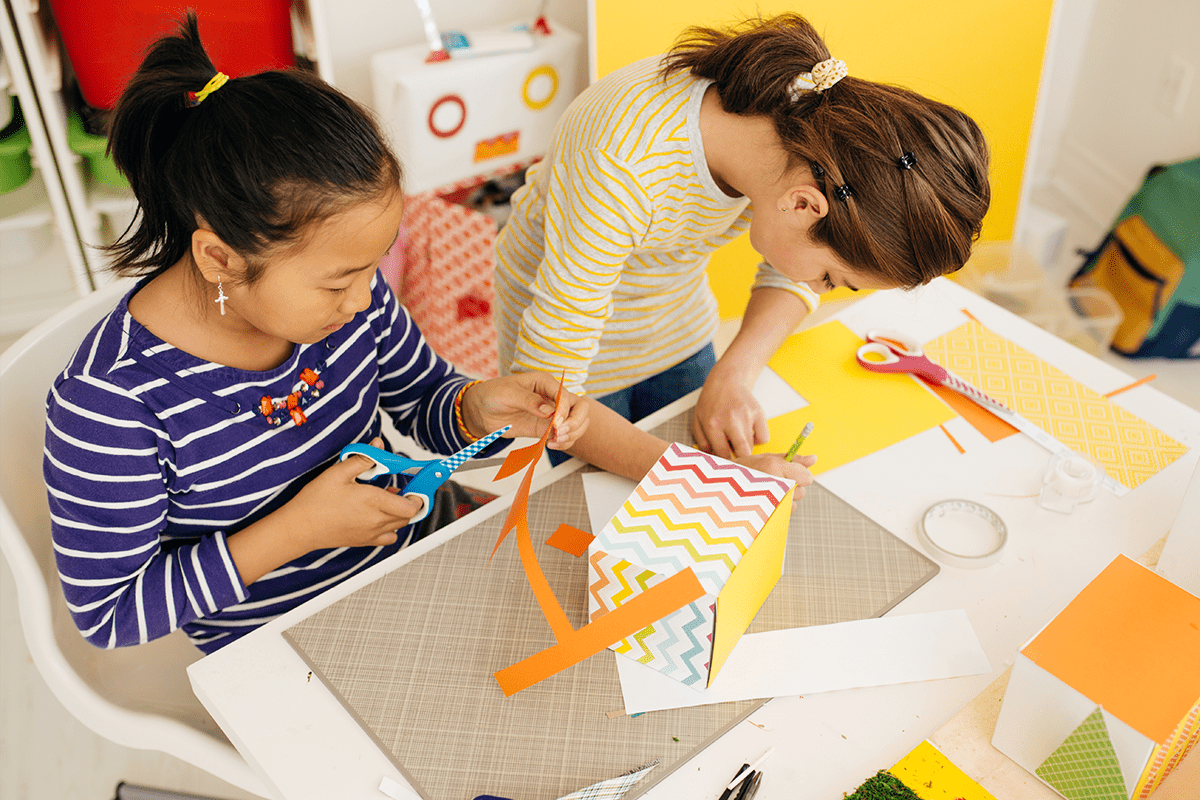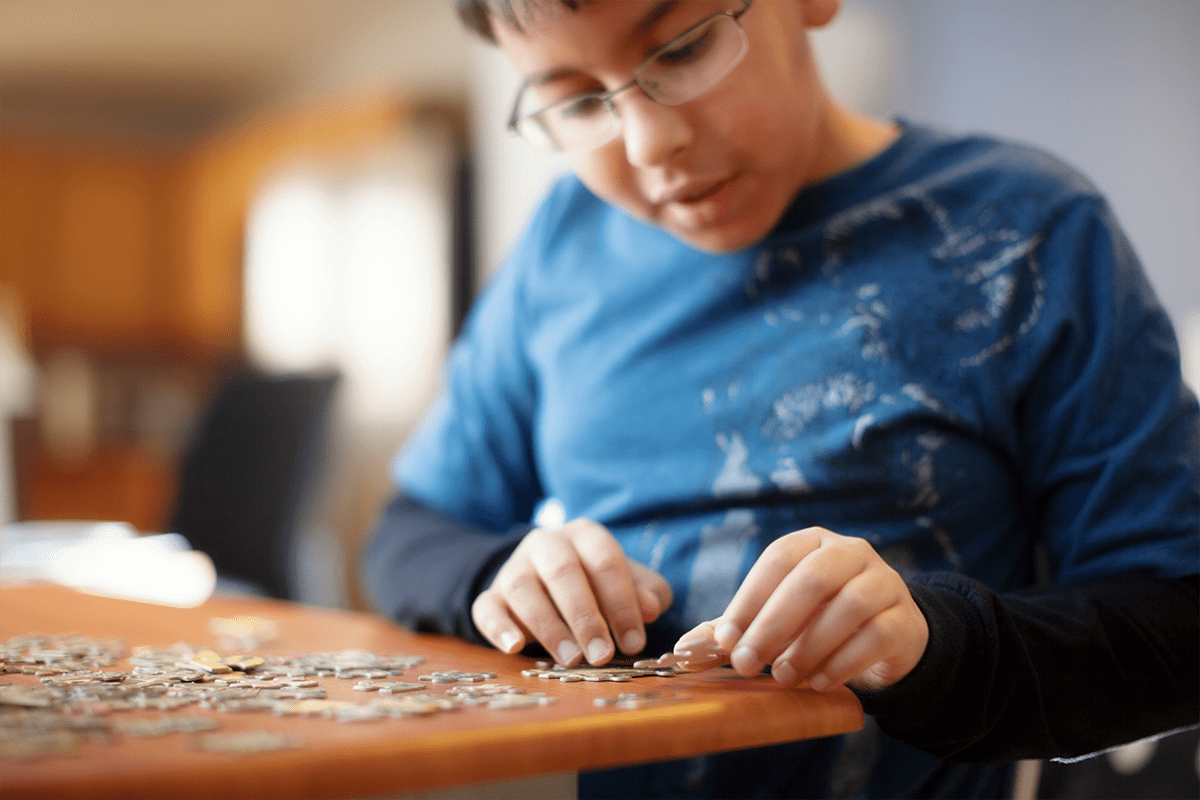What Is Executive Functioning?
When you hear the word “executive,” you probably think of a person in a suit at a meeting saying “proactive,” “synergize,” and “leverage core competencies” while waving at a chart. However, you might be surprised to learn that “executive” also applies to a six‑year‑old with untied shoes and a messy backpack. No, really!
“Executive functioning” describes a group of cognitive skills associated with the brain’s frontal lobe, assisting us with emotional regulation, recall, and planning. These capabilities include organization, persistence, flexibility, and the ability to follow multi-step instructions. Three major brain functions support these skills: self-control, mental flexibility, and working memory. As you would expect, these capabilities are interconnected, and work (or don’t) together.
Executive functions are the cognitive processes that our brains perform, including paying attention, organizing and planning, initiating tasks and staying focused, regulating emotions, and self-monitoring. These interconnected skills allow us to carry out critical, everyday tasks.
Play and Executive Function
Scientists at the National Institutes of Health suggest that “programs with active play components may be more successful in eliciting improved executive function (defined here as self‑regulation) because of the importance of motor learning early on and because of the social motivation aspects of learning.”
Children aren’t born with executive functioning skills, but rather learn them through modeling and the give and take of relationships. This can happen at home, at school, and with peers. Play gives children an opportunity to practice and refine these skills in supportive, non‑threatening settings, where learning looks exactly like fun.
Here are some examples of easy‑to‑implement ideas that support executive functioning during play:
Add Complexity

Pretend play involves internal rule‑following as a child acts out what they see on a consistent basis from parents, family members, friends, or others in their surroundings. Children who are not used to imaginative play might need support from adults or teachers. It’s important to avoid dismissing ideas when possible; use “I see the dinosaur swimming” rather than “Dinosaurs don’t go in cups.”
Choose questions and statements that expand on the play. Ask open‑ended questions such as:
- What do you want to accomplish?
- Why do you think ”¦?
- What else might you try?
- What do you notice about this?
- What made you think of doing that instead?
Welcome the use of materials and vary props to inspire complex, creative play. Open‑ended toys promote the opportunity to explore ideas, test theories, and engage in new concepts without fear of making mistakes when working through layers of complexity.
Ideas for open‑ended play supplies:
- Paper
- Writing materials
- Scissors
- Pieces of fabric
- Blocks
- Wheels
- Boxes
- Buckets
- Plastic containers
- Cardboard tubes
- String
- Scales
- Magnifying glasses
- Sand
- Clay
- Wrapping paper
- Aluminum foil
- Water
- Glue
- Grocery and lunch bags
- Envelopes
- Trays
- Squeeze bottles
- PVC pipe and connectors
- Leaves, sticks, seeds, and flowers
- Clear plastic squares
- Straws
- Masking tape
As children play, expect them to talk to themselves. You might hear them saying things like, “Should you be doing that?” or “That doesn’t work, maybe I will do this.” This private speech is a major sign that a child is regulating their thinking and using their executive function skills. It is an indication the child is internalizing guidance from others into their patterns of behavior.
Reinforce Step‑by‑Step Routines

Visual and auditory cues help a child remember rules or a sequence of instructions. They also support children with recall, organizing, following multi‑step instructions, and avoiding distractions. Consider using transition songs, visual support symbols, and class photo books that illustrate routines. Close‑ended toys can be helpful, too! Examples of close‑ended toys include puzzles, books, shape sorters, or anything that has a clear objective, sequence, and end result.
Children benefit when you break large tasks into smaller ones. You can model this. “Now in order to put on the play, I must first ”¦ then I must ”¦” You could record these tasks on a flip chart as a visual reminder. This is especially helpful for bigger, more complex tasks.
Encourage Storytelling

Oral storytelling challenges children to use working memory. While telling a story, the child must tap into executive function to chain the parts of the story together and to create elements that relate. While listening to others and waiting their turn, they rehearse impulse control skills.
Incorporate “pair and share” opportunities for children to express ideas and experiences. Rather than using large group time to go around a circle and share one at a time, pair children for sharing. This allows more talking with less waiting. This technique is especially helpful for the young child just beginning to demonstrate impulse control. For example, during reading when connecting background knowledge to a story about summer, you can pair students to discuss their unique experiences about summer.
Stop, Look, and Listen

Model pausing and thinking before taking action. You might even say out loud, “Now ”¦ let me think for a minute (long pause). I could do ”¦ or perhaps ”¦ or ”¦ If I do this, it seems ”¦” This shows children a thinking pattern they can imitate when they have to compare options and decide. Facilitate games that involve turn‑taking, stop‑and‑go concentration (like Freeze Dance or Red Light/Green Light). Point out cause and effect play opportunities or experiments. An example of modeling can look something like this:
The teacher or parent knows the child wants a toy another student or sibling is playing with and they model a thought process. “Hmm, I really want that (toy), but (name) is playing with it right now. I can go ask them if I can play with them, or I can see if I can have a turn when they are done, or I can play with a different toy. I think I will ask them if I can play.”
One of the most important things to remember about executive functioning skills is that they are not inherently wired in our brain at birth, so we need to provide plenty of opportunities for exposure, explicit instruction, modeling, and practice. When we treat this set of skills like we do reading and math, children’s executive function skills will significantly grow and develop.


